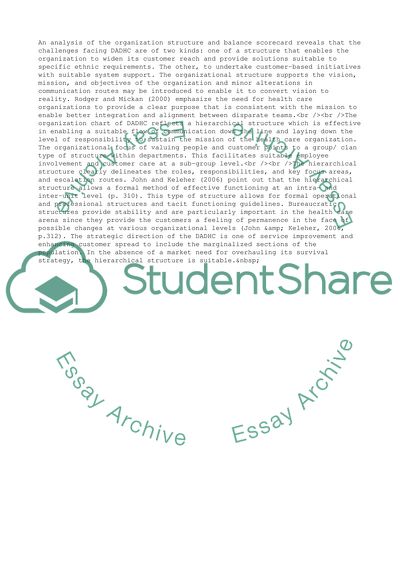Cite this document
(Organization Structure and Mission of the DADHC Case Study Example | Topics and Well Written Essays - 1500 words, n.d.)
Organization Structure and Mission of the DADHC Case Study Example | Topics and Well Written Essays - 1500 words. https://studentshare.org/management/1721597-critical-analysis-of-organisational-structure-and-relationship-to-mission-and-vision
Organization Structure and Mission of the DADHC Case Study Example | Topics and Well Written Essays - 1500 words. https://studentshare.org/management/1721597-critical-analysis-of-organisational-structure-and-relationship-to-mission-and-vision
(Organization Structure and Mission of the DADHC Case Study Example | Topics and Well Written Essays - 1500 Words)
Organization Structure and Mission of the DADHC Case Study Example | Topics and Well Written Essays - 1500 Words. https://studentshare.org/management/1721597-critical-analysis-of-organisational-structure-and-relationship-to-mission-and-vision.
Organization Structure and Mission of the DADHC Case Study Example | Topics and Well Written Essays - 1500 Words. https://studentshare.org/management/1721597-critical-analysis-of-organisational-structure-and-relationship-to-mission-and-vision.
“Organization Structure and Mission of the DADHC Case Study Example | Topics and Well Written Essays - 1500 Words”. https://studentshare.org/management/1721597-critical-analysis-of-organisational-structure-and-relationship-to-mission-and-vision.


